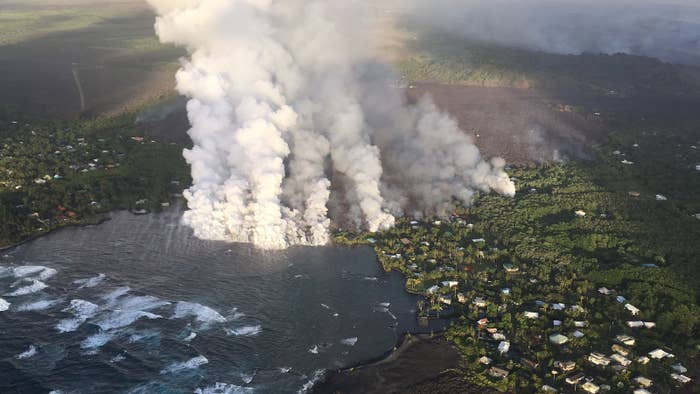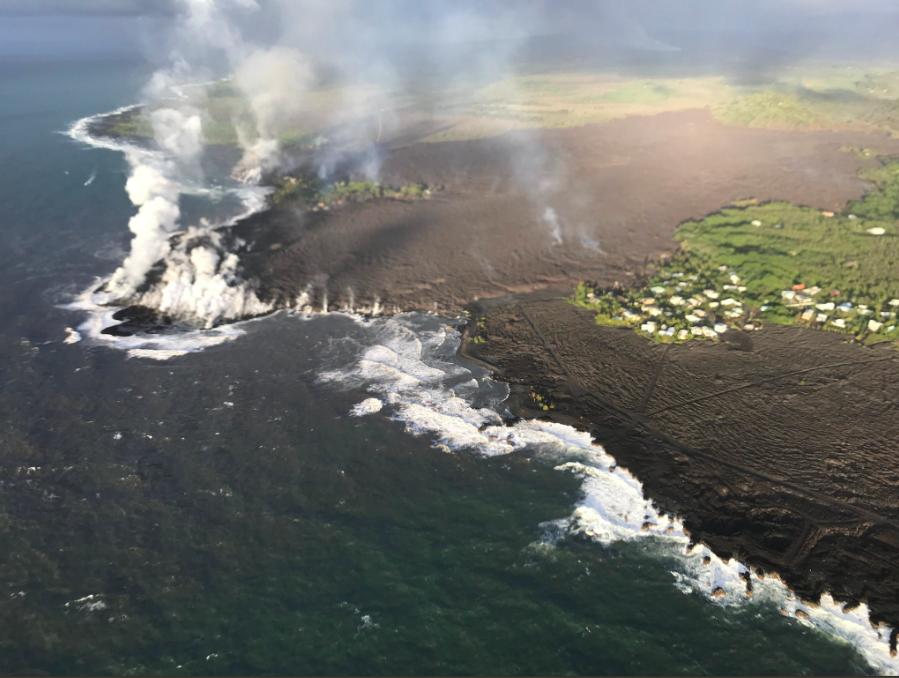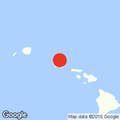
A month after lava first began gushing out of cracks near homes on Hawaii's Big Island, the eruption at Kilauea volcano showed no sign of ending Monday with lava burning through residential communities as it flowed toward the ocean.
On Sunday morning, the lava began destroying homes in the communities of Vacationland and Kapoho Beach Lots. By Wednesday morning, lava had completely covered Vacationland, according to the US Geological Survey. Residents in the area were advised to evacuate last week, since it was clear that the lava would sever a major highway that connects the area to the rest of the island.
Late Sunday night, the lava reached the ocean, flowing into and mostly filling Kapoho Bay. Lava filled it entirely by Wednesday.
Lava from Kilauea burst through the ground on May 3 in the residential neighborhoods of Leilani Estates and Lanipuna Gardens, with fissures spewing lava as high as 200 feet. As the eruption continued, three channels flowed south, where it crossed a major highway and entered the ocean just north of Mackenzie State Park.
From the same fissure area, a new channel started to form last week, but it spread in a different direction — flowing east toward Kapoho. Lava follows the topography of the land, usually flowing down the path of least resistance, and now the flow has almost entirely filled a bay of pristine tide pools.
The flow entered the ocean Sunday at Kapoho Bay and adjacent to the Kapoho Tide Pools (also called the Wai'ōpae Tide Pools), which are part of a marine conservation district. The water in Kapoho is particularly unique because of the many anchialine ponds — landlocked water that has a subterranean connection to the ocean — connected to the tide pools. The area is also a marine nursery and is warmed by the volcano, which made it a highly desirable snorkel spot.
While most of the bay had been filled with lava by Monday afternoon, the northern part of the bay, referred to as Champagne Pond, was still submerged. The area is named after the bubbly beverage because the volcano's heat creates little bubbles.
Hawaii County Civil Defense Administrator Talmadge Magno estimated that there are at least a dozen people who have not evacuated, but that they have no way of communicating with anyone remaining in Kapoho, since phone and power service is no longer working in the isolated area.
There are now 117 homes that have been verified destroyed by lava, but that figure does not include the new communities, which have not yet been counted. Magno said the lava "doesn’t show any sign of slowing down" and he expected destruction to continue.


A US Geological Survey helicopter rescued three people trapped in the area isolated by lava on Sunday morning, according to scientist Janet Babb. She said the stranded people flagged the helicopter down because they did not have any cell service. The helicopter then dropped off the USGS scientists in a safe spot and returned to rescue the three people.
On Saturday night, 393 people stayed at one of the three shelters that have been opened for lava evacuees, which includes people who have now been there for over a month, as well as evacuees from Kapoho Beach Lots and Vacationland.
Kīlauea status report: 10:28 PM HST June 5, 2018 https://t.co/7sDZqcx8dU Fissure 8 fountaining to 150-180 feet; ocean entry continuing; summit earthquake activity is low but beginning to ramp up after Tuesday morning's small explosion. https://t.co/ZkNjvu9B5S
An eruption in 1960 covered the town originally known as Kapoho, where there were about 100 homes at the time, but since then the area had not seen any lava. Despite being on the east flank of the volcano, Kapoho was rebuilt as a gated community with its swimmable coastline. At least 1,000 people live there, although many of the oceanfront homes are multimillion-dollar vacation retreats.



